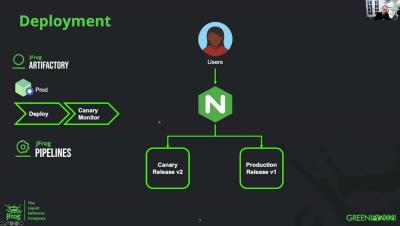Operations | Monitoring | ITSM | DevOps | Cloud
Networks
The latest News and Information on IT Networks and related technologies.
DX NetOps 21.2 Network Monitoring Software Continues to Improve Visibility with Expanded SD-WAN, SDDC, and SD-WiFi Coverage
DX NetOps 21.2 network monitoring software continues to innovate and improve the scale, speed, and simplicity of network operations with a focused set of high-value features and capabilities. The solution collects data (network faults, performance, events, and alarms) from SDN and WiFi controllers and orchestrators to deliver deep visibility into the health and performance of your modern network deployments. Additionally, the solution correlates data from different network streams.
OpManager: Network visualization tool that turns data into insights
Information is one of an organization’s most important assets. In the global wide area network (GWAN), operations of all sizes store, change, and exchange their business data. Similar to how the meaning of digital data sharing has evolved, aspects like data availability and security have taken on important new meanings as well. Today’s IT administrators need to ensure the network is stable.
Upgrade Alert: Test Your Internal Infrastructure with Enhanced Private Location Monitoring
External servers need to be monitored but it’s your backend infrastructure that supports them. Looking for a reliable way to monitor your internal networks? You’re in luck! Uptime.com Private Location monitoring is just the tool for you.
Lights out for SDH: What you need to know but were afraid to ask
5 Scenarios Where An Agile Networking Model Can Benefit Your Business
HAProxy Configuration Basics: Load Balance Your Servers
Learn how to set up basic load balancing using the HAProxy configuration file. If you’re new to using the HAProxy load balancer, you’ve come to the right place. In this blog post, you’ll learn how to configure HAProxy for basic load balancing. I am assuming that you’ve already installed the software. If not, there are several ways to do so.
Out-Of-The-Box Zero Touch Network Monitoring
AI monitoring technologies have the potential to introduce significant cost savings for CSPs. Based on machine learning and fully autonomous, these monitoring solutions provide high ROI by dramatically reducing Time to Detection (TTR), Time to Resolution (TTR), the total number of alerts, and the number of false positives and negatives.
Are 400GZR+ Pluggables an Embedded 800G Giant Killer?
We are now at the start of an era where 400GbE is breaking out of data centers and displacing 100GbE as the dominant client interface requiring wide-area optical transport. This is resulting in 400G lanes becoming the new building block of optical networks to transport existing 100GbE and growing 400GbE client traffic, for both metro and long haul applications.











